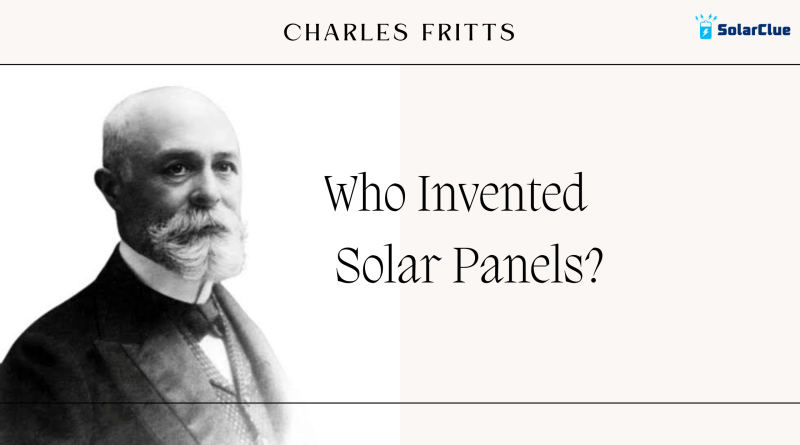Who Invented Solar Panels?
The history of solar power is a fascinating journey filled with remarkable discoveries and groundbreaking innovations. This blog post delves into the key figures and breakthroughs that have shaped the development of solar technology. From the early experiments of the 19th century to the advanced solar panels of today, we trace the evolution of solar power and its impact on our world.
Table of Contents
Early Experiments in Solar Power
The Work of Alexandre Edmond Becquerel
In 1839, French physicist Alexandre Edmond Becquerel discovered the photovoltaic effect, the principle behind solar power. He observed that certain materials produced small amounts of electric current when exposed to light, laying the foundation for future solar technology.
Willoughby Smith and Selenium
In 1873, Willoughby Smith discovered the photoconductivity of selenium, which later became a crucial material in early solar cells. This discovery was pivotal in demonstrating the potential for converting light into electricity.
Key Figures in Solar Technology Development
Charles Fritts and the First Solar Cell
In 1883, American inventor Charles Fritts created the first solar cell by coating selenium with a thin layer of gold. Although inefficient by today’s standards, Fritts’ solar cell was a groundbreaking step towards harnessing solar energy.
Albert Einstein’s Contribution
Albert Einstein’s 1905 paper on the photoelectric effect provided a theoretical explanation for the photovoltaic effect, earning him the Nobel Prize in Physics in 1921. Einstein’s work was instrumental in understanding how light can be converted into electricity.
Russell Ohl and the Modern Solar Cell
In 1941, American engineer Russell Ohl patented the first modern silicon solar cell. Ohl’s work at Bell Labs led to the development of more efficient and practical solar cells, paving the way for commercial applications.
The Path to Commercialization
Bell Labs and Silicon Solar Cells
In 1954, Bell Labs introduced the first practical silicon solar cell, achieving an efficiency of 6%. This breakthrough marked the beginning of the solar power industry and demonstrated the potential for large-scale solar energy production.
NASA and the Space Race
During the 1960s, NASA adopted solar cells for space missions, providing reliable power for satellites. The success of solar technology in space accelerated research and development, leading to improvements in efficiency and cost.
Evolution of Solar Panels
Advancements in Efficiency
Over the decades, advancements in materials science and engineering have significantly improved the efficiency of solar panels. Modern monocrystalline and polycrystalline panels achieve efficiencies of over 20%, making solar power a viable alternative to traditional energy sources.
Thin-Film Technology
Thin-film solar panels, developed in the late 20th century, offered a lightweight and flexible alternative to traditional silicon panels. While less efficient, thin-film technology has found applications in portable devices and building-integrated photovoltaics.
Timeline of Significant Milestones
| Year | Milestone |
|---|---|
| 1839 | Alexandre Edmond Becquerel discovers the photovoltaic effect |
| 1873 | Willoughby Smith discovers selenium’s photoconductivity |
| 1883 | Charles Fritts creates the first solar cell |
| 1905 | Albert Einstein publishes paper on the photoelectric effect |
| 1941 | Russell Ohl patents the modern silicon solar cell |
| 1954 | Bell Labs develops the first practical silicon solar cell |
| 1960s | NASA uses solar cells for space missions |
| 1970s | Solar power gains attention during the energy crisis |
| 1980s | Development of thin-film solar technology |
| 2000s | Advances in efficiency and cost reduction drive widespread adoption |
| 2020s | Solar power becomes a mainstream energy source globally |
Conclusion
The journey of solar power from early experiments to modern technology is a testament to human ingenuity and the relentless pursuit of clean energy. The pioneers of solar technology have laid the groundwork for a sustainable future, and ongoing advancements continue to push the boundaries of what is possible with solar power.
Here at SolarClue®, we offer a smart, practical, and “beautiful” solution. You will be answered for all the questions related to Solar.
We provide all kinds of brands that are the Best Solar panels in India.
If you are the one who is planning for the solar power system. Don’t hesitate to contact our team!
Looking forward to empowering you with solar energy, just like hundreds of our other clients!
FAQs
1. Who invented the first solar cell?
Charles Fritts created the first solar cell in 1883 using selenium and a thin layer of gold.
2. What is the photovoltaic effect?
The photovoltaic effect is the generation of electric current in a material upon exposure to light, discovered by Alexandre Edmond Becquerel in 1839.
3. How did NASA contribute to solar power development?
NASA’s use of solar cells in the 1960s for space missions demonstrated their reliability and accelerated research and development in solar technology.
4. What are the different types of solar panels?
The main types of solar panels are monocrystalline, polycrystalline, and thin-film, each with varying efficiency and applications.
5. How has solar panel efficiency improved over time?
Solar panel efficiency has improved significantly due to advancements in materials and technology, with modern panels achieving efficiencies of over 20%.


